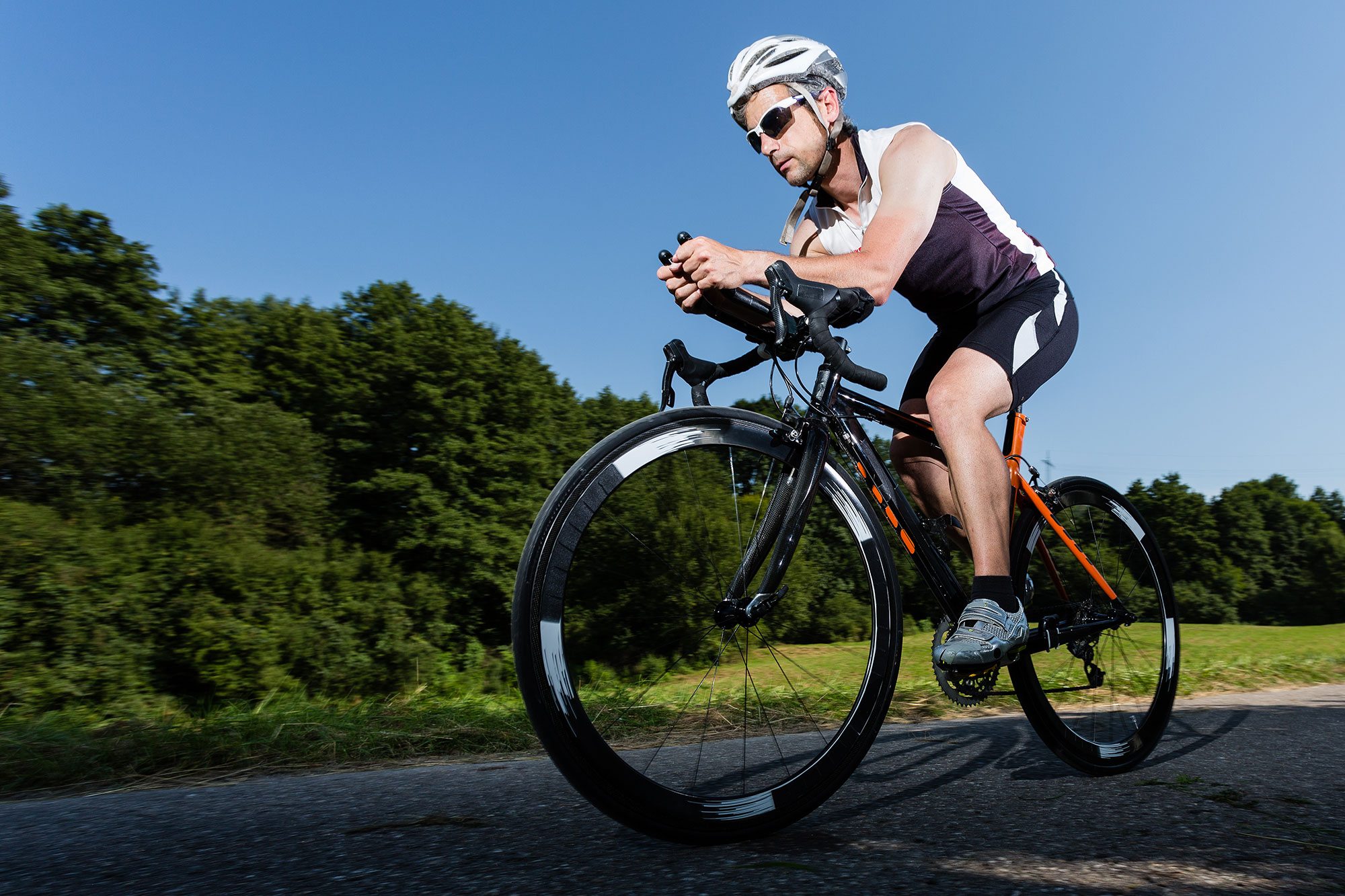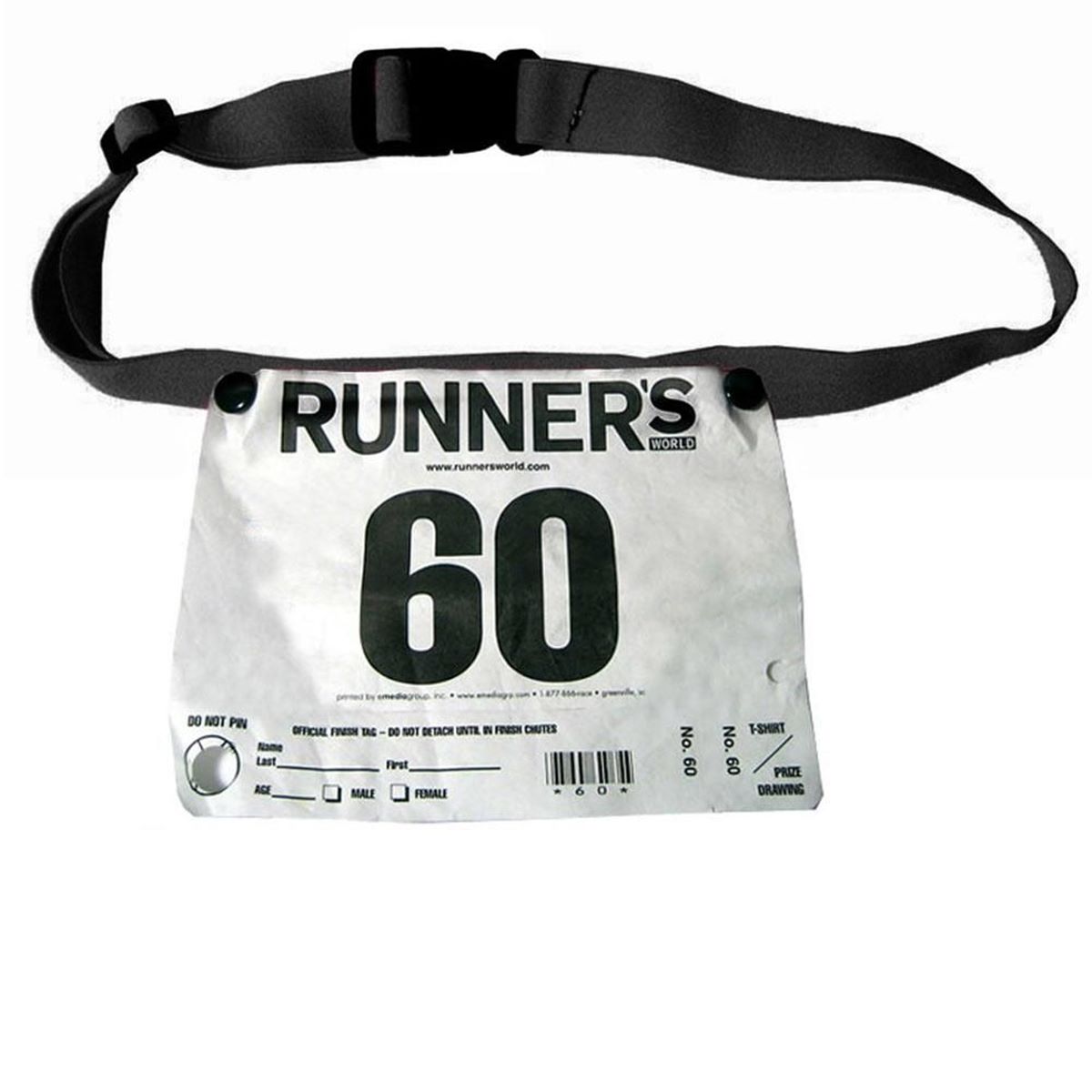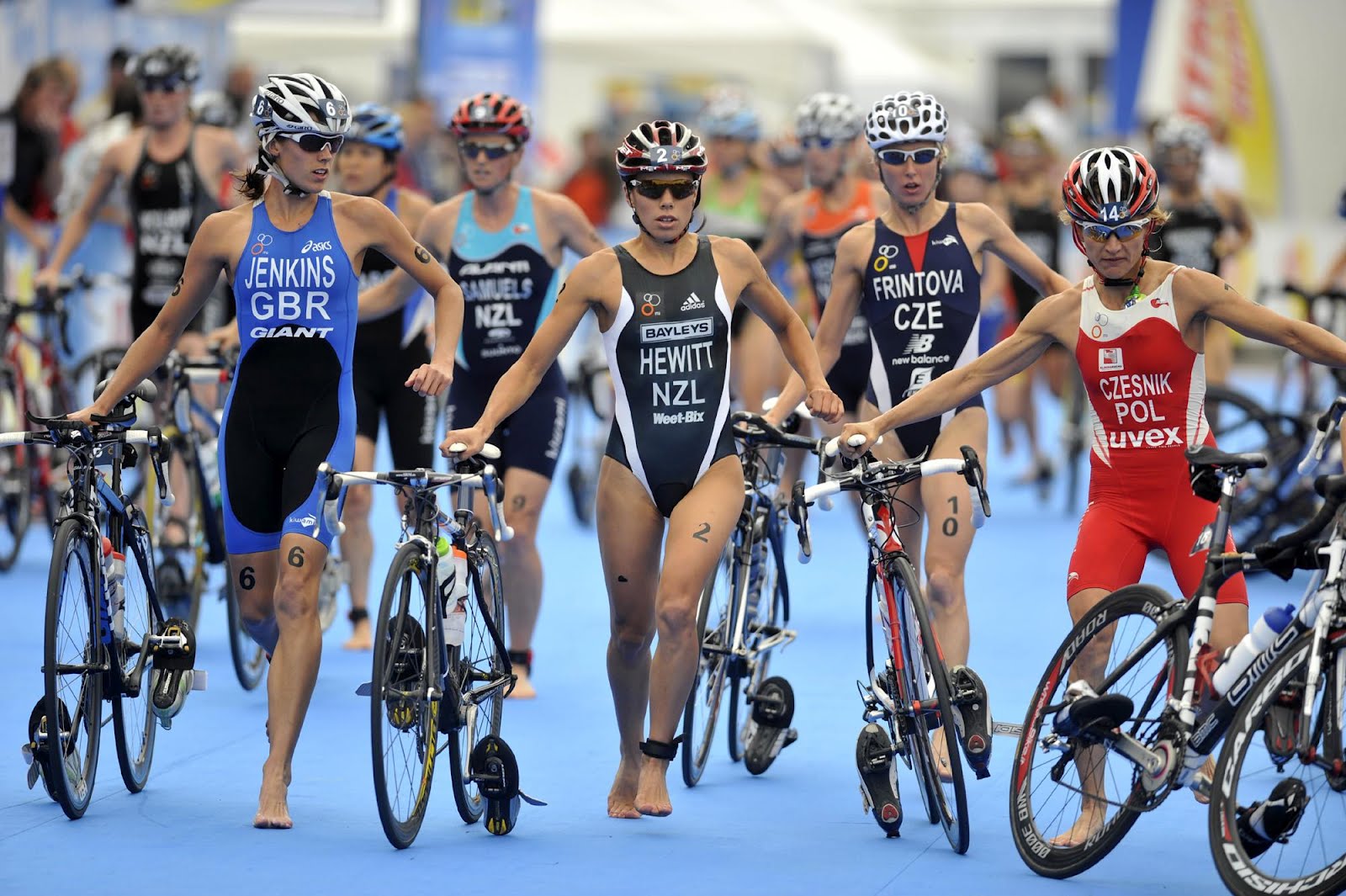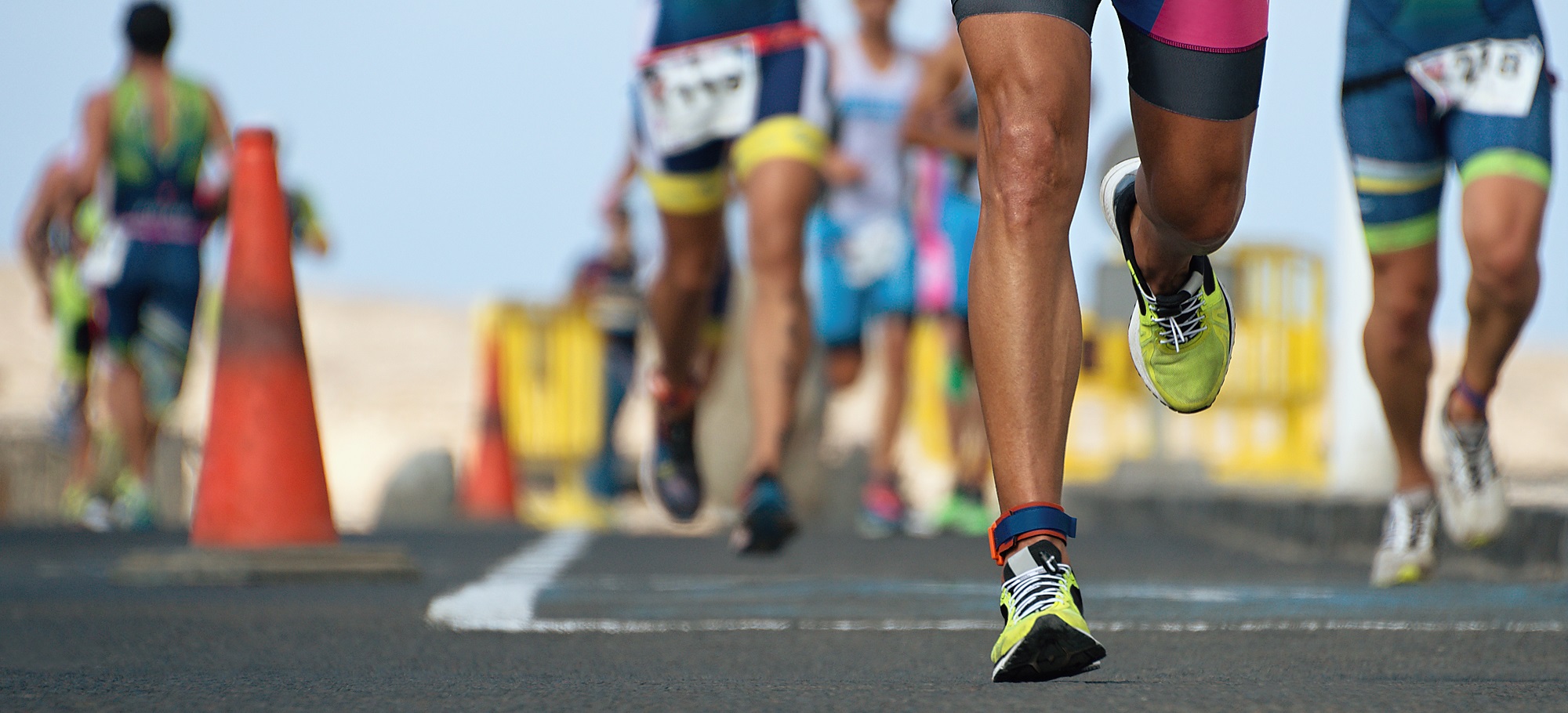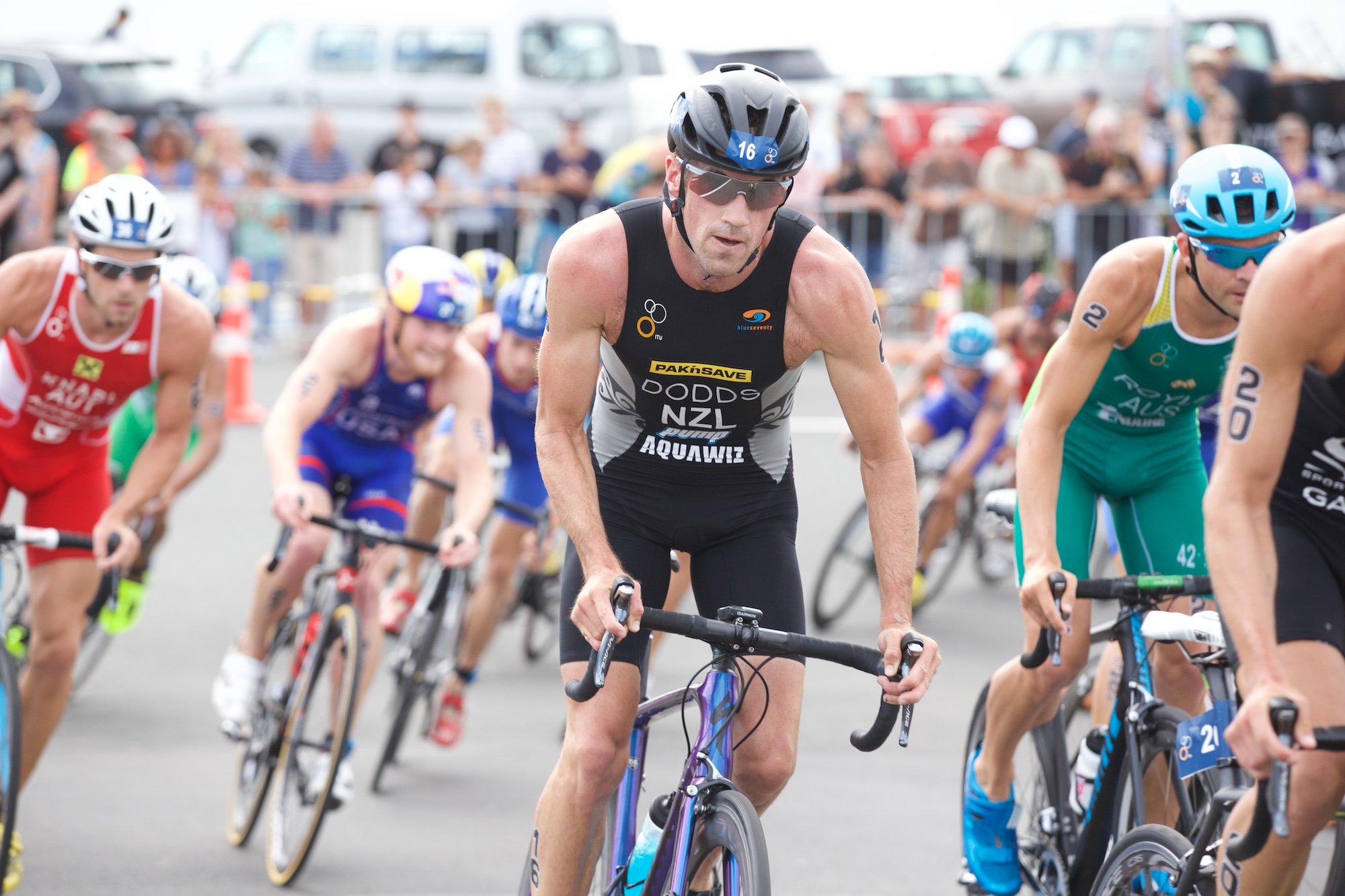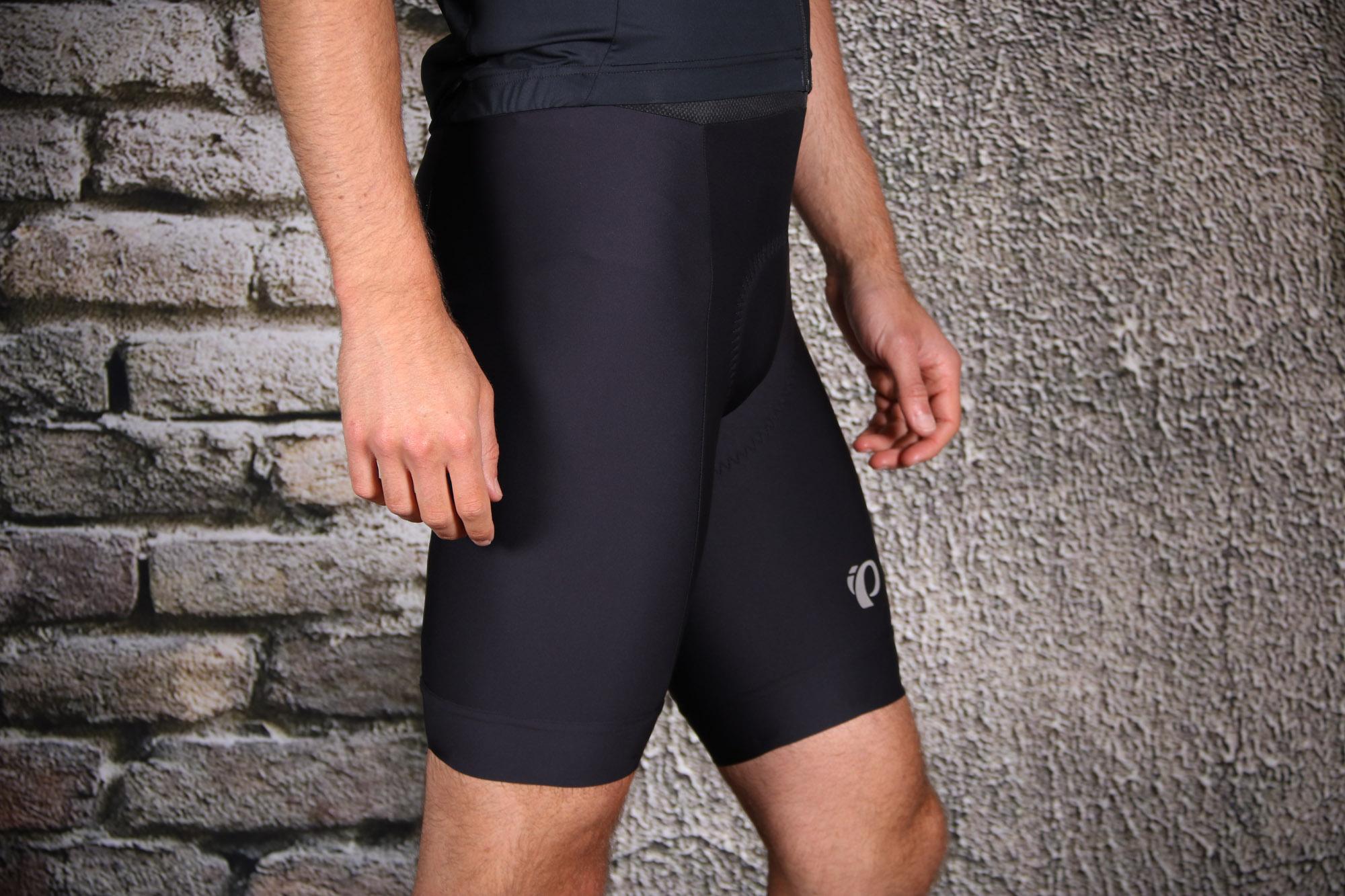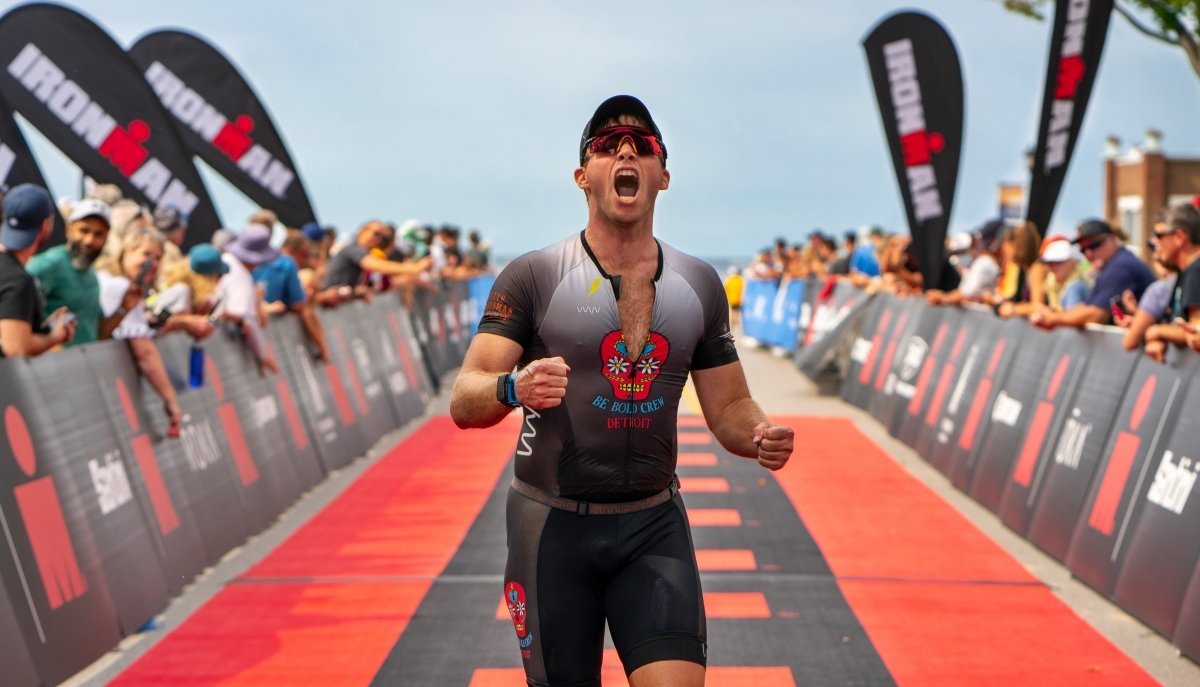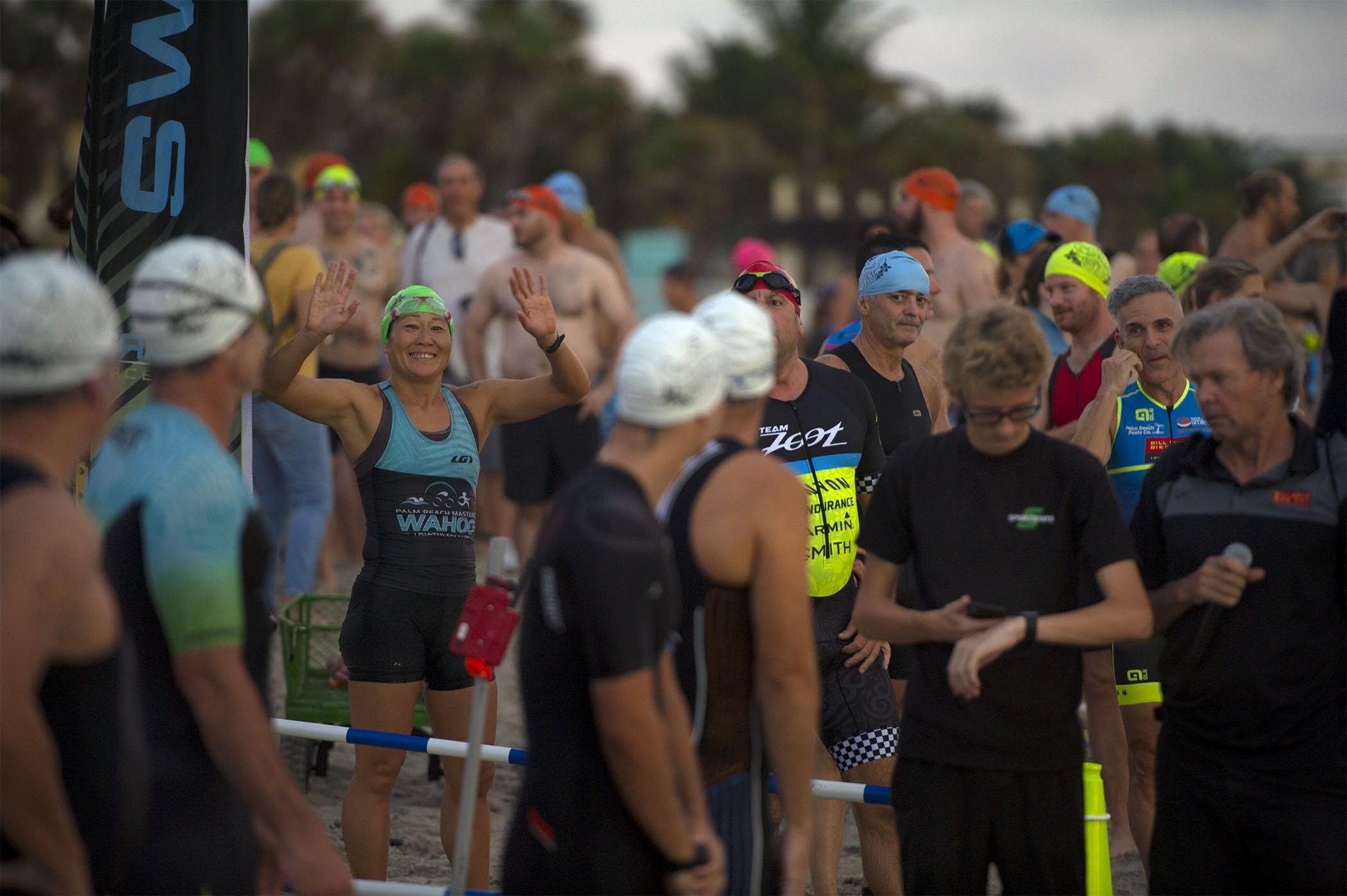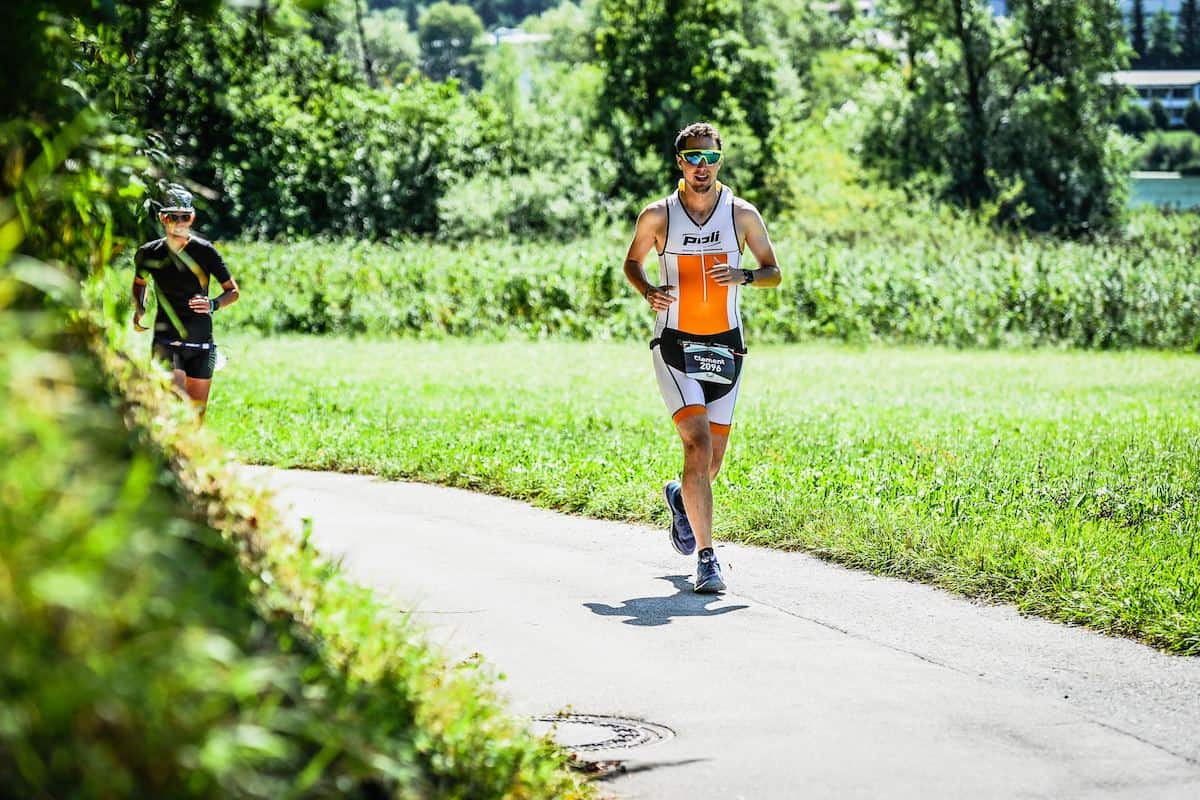

Featured
How Do I Improve My Run In My Triathlon
Modified: January 22, 2024
Learn how to improve your run in your triathlon and become a featured athlete with expert tips and training techniques. Maximize your performance!
Introduction
Triathlon is a challenging and exhilarating sport that combines swimming, cycling, and running. While all three disciplines are important, the run leg can often make or break your overall performance in a triathlon. Whether you’re just starting out or looking to improve your running in a triathlon, this article is here to guide you.
Running in a triathlon requires not only physical endurance and strength but also mental resilience. It’s the final leg of the race, where fatigue sets in, and the finish line is in sight. To excel in this aspect of the triathlon, you need to focus on several key areas, including setting goals, training effectively, improving your running form, strengthening your lower body, fueling your body with proper nutrition, and developing mental strategies.
By following the tips and techniques outlined in this article, you can enhance your running performance and achieve your triathlon goals. Whether you’re aiming for a personal best or simply want to finish strong, the information provided here will set you on the right track.
Before diving into specific strategies, it’s important to note that every triathlete is unique, and what works for one may not work for another. It’s essential to listen to your body, make adjustments as needed, and seek guidance from a professional coach or trainer if necessary.
So, lace up your running shoes, get ready to hit the road, and let’s explore how you can improve your run in a triathlon!
Setting Goals for Your Triathlon Run
Setting goals is a crucial step in improving your run performance in a triathlon. Whether you’re a seasoned triathlete or a beginner, having clear objectives will help you stay motivated and focused throughout your training.
When considering your run goals, it’s important to be realistic and specific. Instead of simply aiming to “run faster,” break down your goals into measurable targets. For example, you might aim to shave off 30 seconds from your 5K run time or complete the run leg without walking.
Additionally, consider the time frame in which you want to achieve your goals. Are you preparing for an upcoming triathlon season or a specific race? Having a timeline will help you structure your training plan and track your progress along the way.
Another aspect to consider is the difficulty level of your goal. It’s great to challenge yourself, but make sure it’s attainable. Setting an unrealistic goal can lead to frustration and burnout. Start with smaller, attainable goals and gradually increase the difficulty as you progress.
Remember, goals should not be solely focused on the outcome. It’s equally important to set process-oriented goals that help you improve your technique and build a strong foundation. For example, you might set a goal to incorporate interval training into your runs or to improve your running efficiency by working on your cadence.
Once you’ve set your goals, write them down and display them where you can see them regularly. This visual reminder will keep you motivated and accountable.
Furthermore, consider sharing your goals with a training partner, coach, or friends who can provide support and hold you accountable. Having someone to share your journey with can make a significant difference in your motivation and commitment.
Remember, goal-setting is not a one-time activity. Revisit your goals periodically and make adjustments as needed. As you progress and achieve your initial targets, set new goals that continue to stretch and challenge you.
Setting clear, realistic, and specific goals will provide you with a roadmap to success and ensure that you stay focused and motivated as you work towards improving your run in a triathlon.
Training for the Run Leg
Training specifically for the run leg of a triathlon is crucial to improving your performance on race day. Here are some key training strategies to incorporate into your routine:
Vary your workouts: Include a mix of long runs, tempo runs, interval training, and recovery runs in your training plan. This variation will help improve your endurance, speed, and overall running fitness. It’s also beneficial to incorporate cross-training activities such as cycling and swimming to build overall cardiovascular strength.
Progressive overload: Gradually increase your training volume and intensity over time. This progressive approach allows your body to adapt and become stronger. However, avoid overtraining by incorporating rest days into your training schedule to prevent injuries and aid in recovery.
Brick workouts: One of the unique challenges of a triathlon is transitioning from the bike leg to the run leg, also known as a brick workout. Incorporate brick workouts into your training routine, where you immediately follow a bike ride with a run. This helps your body adapt to the feeling of running with tired legs.
Hill training: Hills are a great way to build strength and improve running form. Find a hilly route or incorporate hill repeats into your training plan. Running uphill will strengthen your leg muscles, improve your cardiovascular fitness, and enhance your overall running performance.
Include cross-training: While running is essential for triathlon training, don’t neglect other forms of exercise. Incorporating activities such as swimming, cycling, weightlifting, or yoga can help improve overall muscle balance, flexibility, and reduce the risk of overuse injuries.
Listen to your body: Pay attention to any signs of fatigue, pain, or discomfort during your training. It’s essential to differentiate between normal muscle soreness and potential injuries. If you experience persistent pain or injury, consult a healthcare professional to address the issue promptly.
Rest and recovery: Rest is just as important as training. Allow your body enough time to recover between workouts to reduce the risk of burnout and overtraining. Prioritize sleep, as this is when your body repairs and rebuilds itself, improving your overall performance.
Remember that consistency is key when training for the run leg. Stick to your training plan, monitor your progress, and make adjustments as needed. It’s also beneficial to seek guidance from a professional coach or trainer who can provide personalized advice based on your specific abilities and goals.
By incorporating these training strategies into your routine and staying disciplined, you’ll be well on your way to improving your run leg in a triathlon.
Incorporating Interval Training
Interval training is a highly effective and efficient method to improve your running performance for the triathlon run leg. It involves alternating periods of high-intensity effort with periods of recovery. Here are some tips for incorporating interval training into your training routine:
Choose the right workout: There are various interval training workouts you can incorporate into your training plan. Some popular options include tempo runs, fartlek runs, and track workouts. Choose the type of workout that aligns with your goals and fitness level.
Warm-up and cool-down: Before starting any interval training session, it’s essential to warm up your muscles and prepare your body for the intense effort. Perform dynamic stretches and an easy jog for 10-15 minutes to get your blood flowing. After the workout, don’t forget to cool down and stretch to aid in recovery.
Start with shorter intervals: If you’re new to interval training, begin with shorter intervals, such as 30 seconds to 1 minute of high-intensity running, followed by a recovery period. As you become more comfortable, gradually increase the duration and intensity of the intervals.
Monitor intensity: During your high-intensity intervals, aim for a level of effort that is challenging but sustainable. You should be pushing yourself, but not to the point of exhaustion. Use perceived exertion, heart rate monitors, or GPS watches to keep track of your intensity level.
Modify the rest periods: The duration of your recovery periods will depend on your fitness level and the intensity of your intervals. Beginners may need longer recovery periods, while more advanced runners can shorten their recovery time to challenge themselves further.
Gradually increase volume and intensity: As your fitness improves, you can increase the volume (total time) and intensity (pace) of your interval training sessions. This progressive overload will continue to challenge your body and improve your running performance.
Mix up your workouts: To prevent monotony and keep your body adapting, vary your interval workouts. Incorporate different distances, speeds, and types of intervals. This variation will stimulate different energy systems and help you become a well-rounded runner.
Recover adequately: Interval training is demanding on your body, so ensure you allow enough time for recovery. Space out your interval sessions with rest days or easy runs to allow your muscles to repair and rebuild.
Incorporating interval training into your training routine can significantly improve your speed, endurance, and overall running performance. Remember to listen to your body and adjust the intensity and duration of your intervals accordingly. With consistent and smart training, you’ll be well-prepared to tackle the run leg of your triathlon.
Improving Running Form
Having good running form is essential for efficient and injury-free running. By making adjustments to your technique, you can improve your running efficiency and ultimately enhance your overall performance in the triathlon run leg. Here are some tips to help you improve your running form:
Posture: Maintain an upright posture with a slight forward lean from the ankles. Avoid slouching or leaning back too much, as it can lead to inefficient movement and strain on your lower back.
Relaxed upper body: Keep your shoulders relaxed and avoid tension in your neck and upper back. This will help conserve energy and allow for more efficient arm swing.
Arm swing: Your arms should swing naturally and relaxed, with a slight bend at the elbows. Avoid crossing your arms in front of your body or swinging them too wide. The movement of your arms should be in sync with your leg movement.
Cadence: Aim for a higher cadence, which is the number of steps you take per minute. Increasing your cadence can improve your running efficiency and reduce the risk of overstriding, which can lead to injuries. Shoot for a cadence of around 170-180 steps per minute.
Foot strike: Strive to land midfoot or forefoot, rather than on your heel. This can help reduce braking forces and enhance propulsion. However, the ideal foot strike can vary depending on factors such as running speed and personal biomechanics, so it’s important to find what works best for you.
Body alignment: Maintain a straight alignment from your head to your ankles. Avoid excessive forward or backward leaning, as it can throw off your balance and put unnecessary strain on your joints.
Core engagement: Activate your core muscles to provide stability and support for your body while running. A strong core can help maintain good posture and prevent inefficient movement patterns.
Breathing: Focus on relaxed and rhythmic breathing. Inhale deeply through your nose and exhale through your mouth. Practice diaphragmatic breathing to ensure adequate oxygen supply to your muscles.
Video analysis: Consider recording yourself while running or seek the help of a running coach to analyze your running form. Visual feedback can provide valuable insights and areas for improvement.
It’s important to note that improving running form takes time and practice. Start by focusing on one aspect at a time and gradually incorporate changes into your running technique. Be patient and persistent, as it may take several weeks or months to see significant improvements.
Additionally, implementing strengthening exercises, such as core work, hip strengthening, and mobility exercises, can complement your efforts in improving running form. Working on your overall strength and flexibility will enhance your body’s ability to maintain proper form and prevent injuries.
By paying attention to your running form and making necessary adjustments, you can become a more efficient and effective runner, resulting in improved performance during the triathlon run leg.
Strengthening Your Lower Body
Having a strong lower body is vital for running performance in a triathlon. Strengthening your legs, hips, and core muscles will not only improve your running speed and efficiency but also help prevent injuries. Here are some effective exercises to strengthen your lower body:
Squats: Squats are a compound exercise that targets multiple leg muscles, including the quadriceps, hamstrings, and glutes. They help improve lower body strength and stability. Start with bodyweight squats and gradually add resistance through dumbbells or barbells as you get stronger.
Lunges: Lunges target the quadriceps, hamstrings, and glutes while also improving balance and stability. Perform forward lunges, reverse lunges, and lateral lunges to target different muscle groups. You can also progress to weighted lunges for an added challenge.
Deadlifts: Deadlifts primarily target the hamstrings, glutes, and lower back. They build overall strength and power in the lower body. Start with a light weight and focus on proper form before gradually adding more weight.
Calf raises: Calf raises strengthen the calf muscles, which play a crucial role in propulsion during running. Perform calf raises on a step or use a calf raise machine at the gym. You can also progress to single-leg calf raises for an added challenge.
Step-ups: Step-ups simulate the movements involved in running and target the quadriceps, hamstrings, and glutes. Use a bench or step platform and step up with one leg at a time, alternating between legs. You can increase the intensity by holding dumbbells in each hand.
Glute bridges: Glute bridges activate the glute muscles and help improve hip stability and power. Lie on your back with your knees bent and feet flat on the ground. Lift your hips off the ground, squeezing your glutes at the top of the movement. Lower back down and repeat.
Plank exercises: Planks target the core muscles, including the abdominals, obliques, and lower back. A strong core is essential for stability and maintaining proper running form. Include exercises like standard planks, side planks, and plank variations to engage all the core muscles.
Plyometric exercises: Plyometric exercises involve explosive movements that help improve power and speed. Examples include box jumps, jump squats, and single-leg hops. Start with lower impact variations and gradually progress to more advanced exercises.
Balance exercises: Improving balance and stability is crucial for running. Incorporate exercises like single-leg balance holds, bosu ball exercises, and single-leg squats to enhance stability and reduce the risk of injury.
When incorporating lower body strength exercises into your training routine, it’s important to prioritize proper form and technique. Start with lighter weights and focus on performing the exercises with control and stability.
Remember to listen to your body and progress at a pace that feels comfortable for you. If you’re new to strength training, consider seeking guidance from a qualified fitness professional to ensure proper form and minimize the risk of injury.
By incorporating lower body strengthening exercises into your training routine, you’ll develop the necessary strength and power to excel in the triathlon run leg, leading to improved performance and reduced risk of injuries.
Nutrition and Hydration for the Run
Proper nutrition and hydration play a significant role in fueling your body and optimizing performance during the run leg of a triathlon. Here are some essential tips to ensure you have adequate energy and hydration:
Pre-run nutrition: Fueling your body before a run is crucial for sustained energy. Consume a balanced meal or snack containing carbohydrates, protein, and healthy fats about 1-2 hours before your run. This will provide you with the necessary fuel and help prevent energy crashes during the race.
Hydration: Staying hydrated is essential for maintaining optimal performance and preventing dehydration. Aim to drink water regularly throughout the day leading up to your run. During longer runs or hot weather, consider including electrolyte-rich sports drinks to replenish lost salts and minerals.
During-run nutrition: For longer runs or races, you may need to consume additional carbohydrates to keep your energy levels up. Experiment with different forms of fuel such as energy gels, chews, or sports drinks to find what works best for you. Aim to consume around 30-60 grams of carbohydrates per hour during the run.
Post-run nutrition: After your run, prioritize replenishing your energy stores and aiding in recovery. Consume a post-run snack or meal containing carbohydrates and protein within 30-60 minutes of finishing your run. This will help repair muscles and replenish glycogen stores.
Practice race-day nutrition: It’s important to train your body to tolerate and digest the nutrition and hydration you plan to use on race day. Practice your nutrition and hydration strategy during long training runs to ensure it works well for your body and doesn’t cause any gastric distress.
Listen to your body: Everyone’s nutritional needs during a run can vary, so it’s important to listen to your body and adjust accordingly. Pay attention to signs of hunger, fatigue, or dehydration during your training runs and make adjustments to your nutrition plan as needed.
Consult a sports nutritionist: If you’re unsure about your nutritional needs or how to optimize your nutrition for the run leg, consider consulting with a sports nutritionist. They can provide personalized guidance based on your specific requirements and help you create a nutrition plan that supports your goals.
Avoid trying new foods or drinks on race day: Stick to foods and drinks that you have tested and are familiar with. Race day is not the time to try new foods or drinks that could potentially cause stomach upset or discomfort.
Remember, nutrition and hydration are not only important during the race but also throughout your training. Proper fueling and hydration during training runs will help you better understand your body’s needs and allow you to fine-tune your nutrition strategy for the race day.
Keep in mind that individual nutritional needs can vary, so it’s essential to experiment with different foods, drinks, and timing to find what works best for you. With a well-planned nutrition and hydration strategy, you’ll be primed for success in the triathlon run leg.
Mental Strategies for a Strong Run
The run leg of a triathlon can be mentally challenging, especially as fatigue sets in and the finish line approaches. Implementing effective mental strategies can help you stay focused, overcome obstacles, and maintain a strong mindset throughout the run. Here are some mental strategies to enhance your performance:
Set positive affirmations: Develop positive statements or affirmations that you can repeat to yourself during the run. This can help boost your confidence, motivation, and resilience. Examples include “I am strong and capable,” “I am enjoying this experience,” or “I can overcome any obstacle that comes my way.”
Visualization: Use visualization techniques to imagine yourself running strong and crossing the finish line. Picture yourself maintaining good form, feeling strong, and surpassing any challenges that may arise. Visualizing success can help build confidence and reduce anxiety.
Break it down: Instead of focusing on the daunting distance of the run, break it down into smaller, manageable goals or checkpoints. For example, focus on reaching that next tree or completing the next kilometer. By shifting your focus to shorter segments, you’ll feel a sense of accomplishment along the way.
Find a mantra: Choose a short and powerful phrase that resonates with you and helps to keep you mentally strong. Repeat this mantra silently or out loud during challenging moments of the run. It can be anything that motivates and inspires you, such as “I can do this,” “Keep pushing forward,” or “Stay strong, finish strong.”
Practice positive self-talk: Be aware of your internal dialogue and replace any negative thoughts with positive and encouraging self-talk. Instead of dwelling on thoughts like “I’m tired” or “I can’t do this,” reframe them into statements like “I am capable” or “I’m in control of my body and mind.”
Focus on the present moment: Rather than getting overwhelmed by thoughts of how much further you have to go, bring your focus to the present moment. Pay attention to your breath, your surroundings, and the sensations in your body. This mindfulness practice can help keep you centered and calm.
Use external cues: Utilize external cues in your environment to keep your mind engaged and distract yourself from any negative thoughts or fatigue. Focus on the rhythm of your footsteps, the sound of your breathing, or the scenery around you. You can also dedicate each mile or kilometer to someone or something that inspires you.
Find a running buddy: Running with a friend or training partner can provide a great source of motivation and support during the run. Engaging in conversation, sharing the experience, and encouraging each other can help keep your spirits high.
Celebrate small victories: Acknowledge and celebrate each small achievement during the run. Whether it’s hitting a new distance milestone, passing other runners, or overcoming a tough hill, give yourself a mental pat on the back for every accomplishment. This positive reinforcement can help boost your confidence and motivation.
Remember, the mind and body are interconnected, and a strong mental mindset can significantly impact your performance in the triathlon run leg. Incorporate these mental strategies into your training and race day, and you’ll find yourself better equipped to overcome challenges and maintain a strong and positive mindset throughout the run.
Injury Prevention and Recovery
While training for the run leg of a triathlon, it’s important to prioritize injury prevention and recovery to keep your body in optimal condition. Here are some key strategies to help you stay injury-free:
Gradual progression: Avoid sudden increases in training volume or intensity. Gradually build up your mileage and speed to allow your body to adapt and minimize the risk of overuse injuries.
Cross-training: Engage in cross-training activities that complement your running, such as swimming, cycling, or strength training. Cross-training helps balance musculature, reduces repetitive strain, and provides active recovery for your running muscles.
Strength and flexibility: Incorporate exercises that strengthen your muscles, especially those supporting your lower body. A well-rounded strength training program can help prevent muscle imbalances and improve joint stability. Additionally, prioritize flexibility exercises to maintain or improve your range of motion.
Proper footwear: Invest in a good pair of running shoes that provide adequate support and cushioning for your feet. Replace your shoes regularly to ensure they maintain their shock absorption properties and prevent overuse injuries.
Listen to your body: Pay attention to any signs of pain, discomfort, or fatigue during your training runs. If you experience persistent pain, seek medical advice and consider taking a break to allow your body to rest and recover.
Rest and recovery: Incorporate regular rest days into your training schedule to allow your body to recover and repair. Rest is essential for preventing overuse injuries and maintaining performance. Additionally, prioritize getting enough sleep to support your body’s recovery processes.
Quality nutrition: Proper nutrition is crucial for fueling your body, supporting recovery, and strengthening your immune system. Ensure you’re consuming a balanced diet that includes a variety of nutrients to meet your body’s needs. Consider consulting with a registered dietitian or sports nutritionist for personalized guidance.
Massage and foam rolling: Incorporate self-massage techniques using foam rollers or massage balls to release muscle tension, improve circulation, and reduce muscle soreness. Regularly target key muscle groups such as calves, quadriceps, hamstrings, and glutes.
Stretching and mobility exercises: Include dynamic warm-up exercises and static stretches in your pre and post-run routines to improve flexibility and reduce the risk of muscle imbalances. Focus on muscles commonly tight in runners, such as the hip flexors, hamstrings, and calves.
Cross-training exercises for rehabilitation: If you experience an injury, consult with a healthcare professional or physical therapist to develop a rehabilitation plan that includes cross-training exercises to maintain fitness and promote healing without exacerbating the injury.
Seek professional guidance: If you’re new to running or have a history of injuries, consider consulting with a running coach or sports medicine professional. They can assess your running form, provide guidance on technique improvements, and help tailor a training plan that minimizes the risk of injury.
Remember that injuries are common in endurance sports, but with proper injury prevention strategies and a proactive approach to recovery, you can minimize your risk and stay on track with your triathlon training. Prioritize your body’s well-being, listen to its signals, and make adjustments as needed to ensure you’re performing at your best on race day.
Conclusion
Improving your run in a triathlon requires a combination of physical training, mental strategies, and proper nutrition and recovery. By setting clear goals, implementing effective training techniques, and focusing on aspects such as running form, lower body strength, and injury prevention, you can enhance your performance and achievement in the run leg of a triathlon.
Setting realistic and specific goals will provide you with the motivation and direction needed to succeed. Training for the run leg should include a variety of workouts, including interval training, to improve speed, endurance, and running efficiency. Working on your running form and strengthening your lower body will enhance your overall performance and reduce the risk of injuries.
Nutrition and hydration play a vital role in fueling your body and maintaining energy levels during training and on race day. By following proper pre-run and during-run nutrition strategies, you can optimize your performance and recovery. It’s crucial to listen to your body’s signals and adjust your nutrition plan accordingly.
Mental strategies, such as positive self-talk, visualization, and goal setting, can help you maintain a strong and focused mindset during the run. By employing these techniques, you’ll be able to overcome challenges and push through fatigue to achieve your desired results.
Injury prevention and recovery strategies, including gradual progression, cross-training, and proper rest, are essential for maintaining your body’s health and minimizing the risk of injuries. By taking care of your body and addressing any potential issues promptly, you’ll be able to train consistently and avoid setbacks.
Remember, every triathlete is unique, so it’s important to tailor these strategies to your individual needs and abilities. Seek guidance from professionals, such as coaches and nutritionists, to ensure you’re on the right track and making progress towards your goals.
Triathlon running is a challenging yet rewarding endeavor. With dedication, consistency, and a comprehensive approach to training, you can improve your run performance and achieve success in the triathlon run leg. So, lace up your shoes, embrace the journey, and enjoy the thrill of crossing that finish line!
